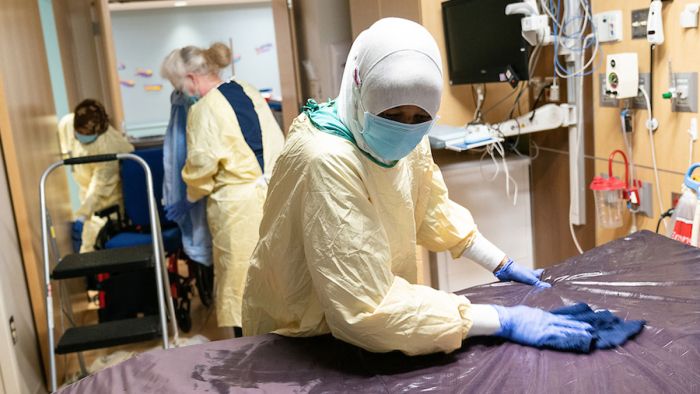Every year, millions of patients globally acquire a healthcare-associated infection (HAI), which can be contracted by patients while receiving medical treatment, according to the World Health Organization. On any given day, one in 31 patients has at least one healthcare-associated infection with 75,000 associated deaths in U.S. hospitals each year.
Ecolab, a leader in infection prevention, worked with Gillette Children’s to reduce HAIs by 65 percent over a three-year period. This partnership, included in Ecolab’s latest sustainability report, featured an innovative Patient Room Program that was implemented to help the environmental services team monitor and standardize cleaning procedures, resulting in significant cleaning efficiencies, improved compliance and reduced HAIs.
The importance of fundamentals in infection control measures – such as hand hygiene and environmental hygiene – can significantly improve the patient experience.
Ecolab partnered with Gillette Children’s to implement its Ecolab Patient Room Program, which helps ensure patient rooms are consistently cleaned.
The program uses OxyCide™ Daily Disinfectant Cleaner with sporicidal activity to clean and disinfect high-touch surfaces like sinks and tabletops in combination with Ecolab's patented DAZO® Fluorescent Marking Gel and UV flashlight to quickly and objectively measure how thoroughly surfaces have been cleaned. Importantly, because OxyCide disinfects and cleans surfaces simultaneously, Gillette Children’s was able to streamline their cleaning procedures, saving staff time and labor costs while continuing to reduce potential exposure to HAIs.
The program also features dashboards to track and share DAZO® room cleanliness results and identify actionable opportunities for additional hands-on training with a dedicated local account executive to assist with hospital implementation and training, monitor progress and analyze performance metrics to help ensure program success down to a department, team, individual or object level.
The Patient Room Program helped establish a clear and sustained relationship between increased monitoring, feedback and training and help decreased incidence of HAIs. Gillette Children’s saw high-touch surface cleaning compliance increase from 37 percent to 90 percent and saw a 65 percent decrease in HAIs in the same three-year period, helping drive productivity by increasing patient bed turnover and most importantly keeping children safe during their stay.
“We wanted to identify opportunities to adjust our patient room cleaning practices to increase environmental cleaning compliance and help decrease HAIs,” said Paul Yee, supervisor of Gillette’s Environment of Care. “2020 brought heightened awareness and scrutiny for how we keep our spaces clean, particularly in healthcare settings. But the importance of preventing the spread of germs on surfaces has been a priority for Gillette Children’s since before COVID-19.”
 Home Page
Home Page

